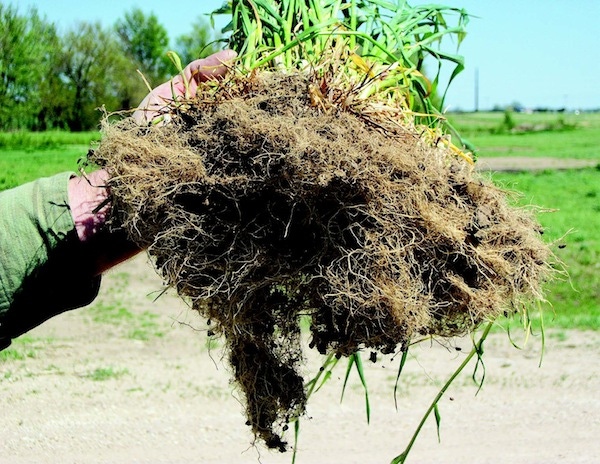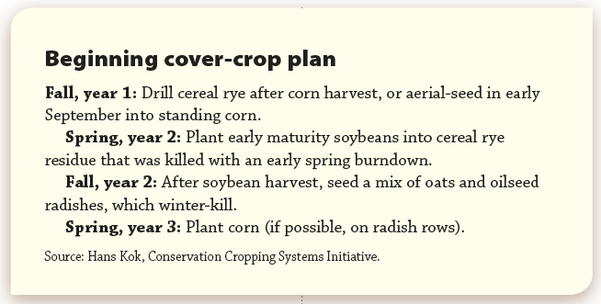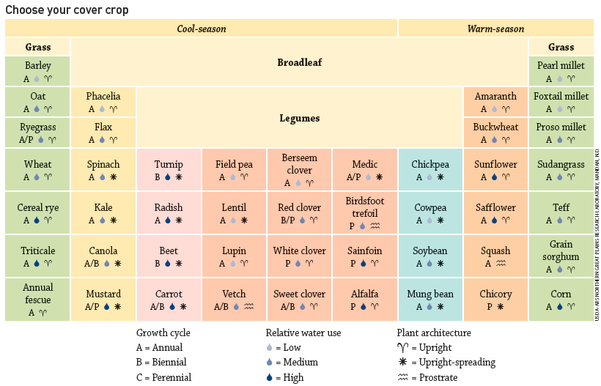
Think differentA recent survey of farmers by the Conservation Technology Information Center found that cover crops boosted corn yields by 9.6% during the drought year of 2012, and soybean yields by 11.6%. That’s compared to side-by-side fields with no cover crops.However, cover crops can also lower cash crop yields if not managed correctly, warns Hans Kok, Conservation Cropping Systems Initiative, Indiana. In a dry spring, the cover crop may use up valuable soil moisture that the cash crop needs, says Joe Lauer, University of Wisconsin corn agronomist.That’s why beginners should start small, Kok says. Instead of planting an entire field of cover crops, he suggests that first-timers put in a few strips at least as wide as the combine. “The combine yield monitor will show you if there is a yield difference.”
November 22, 2013

Are you thinking about trying a cover crop next fall? It’s never too early to plan, and secure your seed supply. Start planning now, says Nick Bowers, a farmer and cover-crop seed dealer from Harrisburg, Ore. “Be very informed before you start. Talk to experienced cover croppers. Do your homework.”
Beginner Jim Zoss, Roanoke, Ill., tried covers for the first time in 2012. His biggest concerns were “getting a cover crop planted in time in the fall and killed in time in the spring.” His advice for first-timers: “Budget extra time for management.”

Which cover crops should I plant?
Your goals, location, cropping practices, equipment and labor resources all affect your cover-crop choices, says Bowers, an annual ryegrass seed grower and co-owner of K B Seed Solutions.
Think about what you want to accomplish with your cover crop, says Sarah Carlson, Midwest cover crop research coordinator for Practical Farmers of Iowa. Do you need forage? Do you want to reduce erosion, break up compaction, scavenge soil N, build organic matter?
Roger Robinson and his father have grown cover crops for decades for forage and soil improvement on their continuous no-till grain and cattle operation near Orleans, Ind. After corn silage harvest, Robinson drills or broadcasts a mix of oats and Austrian winter peas, or oats and turnips. “These produce phenomenal biomass,” he says. After corn for grain or soybeans, he seeds annual ryegrass with turnips or oilseed radishes. If corn is the next crop, he’ll add some crimson clover, too.
The Midwest Cover Crops Council’s interactive decision tool suggests cover crops to meet specific goals and gives seeding date ranges by state and county: http://www.mccc.msu.edu/selectorINTRO.html.
Pay attention to seed quality, too, Robinson adds. “The demand for good cover-crop seed now exceeds the supply.” Work with an established cover-crop seed company that has a track record in your area.

Click graph for a larger format.
How do I plant a cover crop?
Cover crops can be seeded with a standard grain drill after corn or soybean harvest, broadcast with a spinner or airflow spreader followed by light tillage, or applied in liquid manure. Cover crops can also be broadcast over the top of maturing corn or soybeans as leaves are beginning to turn, using a high-clearance seeder, airplane or helicopter.
(Two clever options are at http://bit.ly/16mAXJq and http://bit.ly/OYbgs8.)
Flying on the cover crop in early September gives it more time to grow, but has drawbacks, in Robinson’s experience. Lower seed-to-soil contact, less precise placement, crop-canopy interference and harvest wheel traffic can all hinder establishment. “I haven’t been as successful with aerial seeding.”
How do I kill the cover crop?
Many common cover crops, such as oats and oilseed radishes, die over the winter. Others, such as annual ryegrass and cereal rye, usually survive the winter and are killed in early spring with glyphosate or other herbicides.
But managing the spring burndown can be difficult, especially for beginners, warns cover-crop agronomist Hans Kok, coordinator of the Conservation Cropping Systems Initiative in Indianapolis, Ind. In a wet spring, for example, cereal rye can grow very fast and produce heavy residue, which may interfere with planting and tie up. Annual ryegrass can be hard to kill with glyphosate when it’s cool, because the herbicide doesn’t translocate well, Kok says.
Wait to spray until the cover crop greens up and is actively growing, Bowers says. Spray full rates of glyphosate on a sunny day when the temperature is high enough for good activity, Kok adds. And pay careful attention to spray water quality, pH, hardness and spray coverage. Stop spraying by mid-afternoon, Robinson advises.
What tillage practices are compatible with cover crops?
“Cover crops can work in any system,” Carlson says, but the best fit is with no-till, strip-till, or spring tillage.
Jim Zoss, the Illinois farmer, says cover crops worked very well in his strip-till system. He planted his first cover crop on Sept. 13, 2012, following early corn harvest. His goal was to capture N not used by the drought-stricken corn crop. Zoss drilled 50 acres of annual ryegrass alone, and 60 acres of annual ryegrass mixed with oilseed radish, at a seeding rate of 10 lbs./acre of annual ryegrass and 2 lb./acre of radishes. A week later, he planted 40 acres of oats after corn. He seeded the cover crops in 7.5-inch rows, capping every fourth row on the grain drill to create un-planted strips 30 inches apart. “The blank row is where we made our strips with RTK” later that fall.
Zoss got excellent stands of all three cover crops, spending about $12/acre for seed and $9/acre for drilling and labor. Unfortunately, most of the annual ryegrass died over the winter. However, he still had roots 18 inches deep, which helped hold the soil during last spring’s torrential rains. Zoss killed the surviving annual ryegrass with his regular preplant burndown of glyphosate plus Sharpen. “Then we planted as usual. There was no residue in the strips.”
About the Author(s)
You May Also Like



